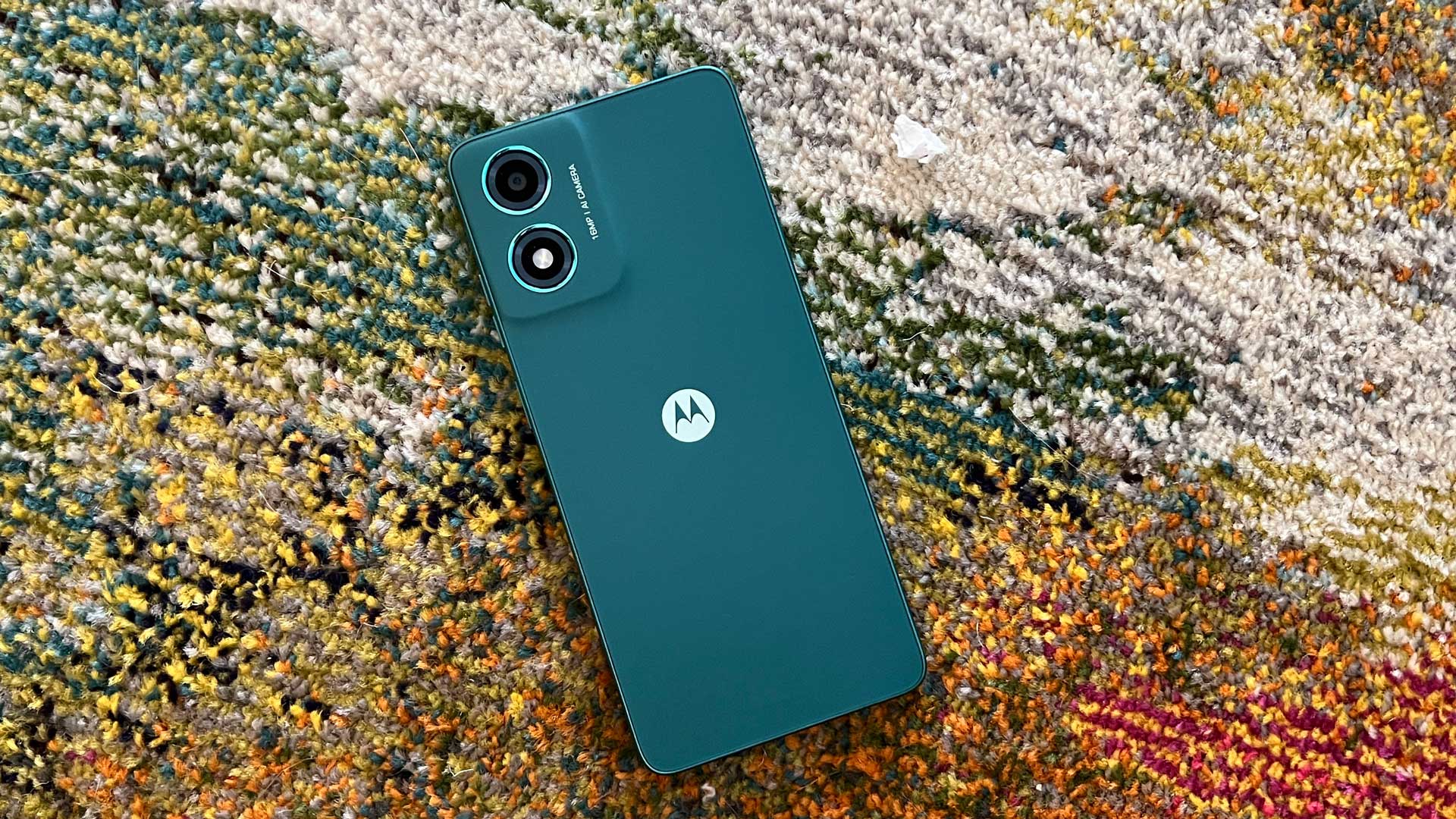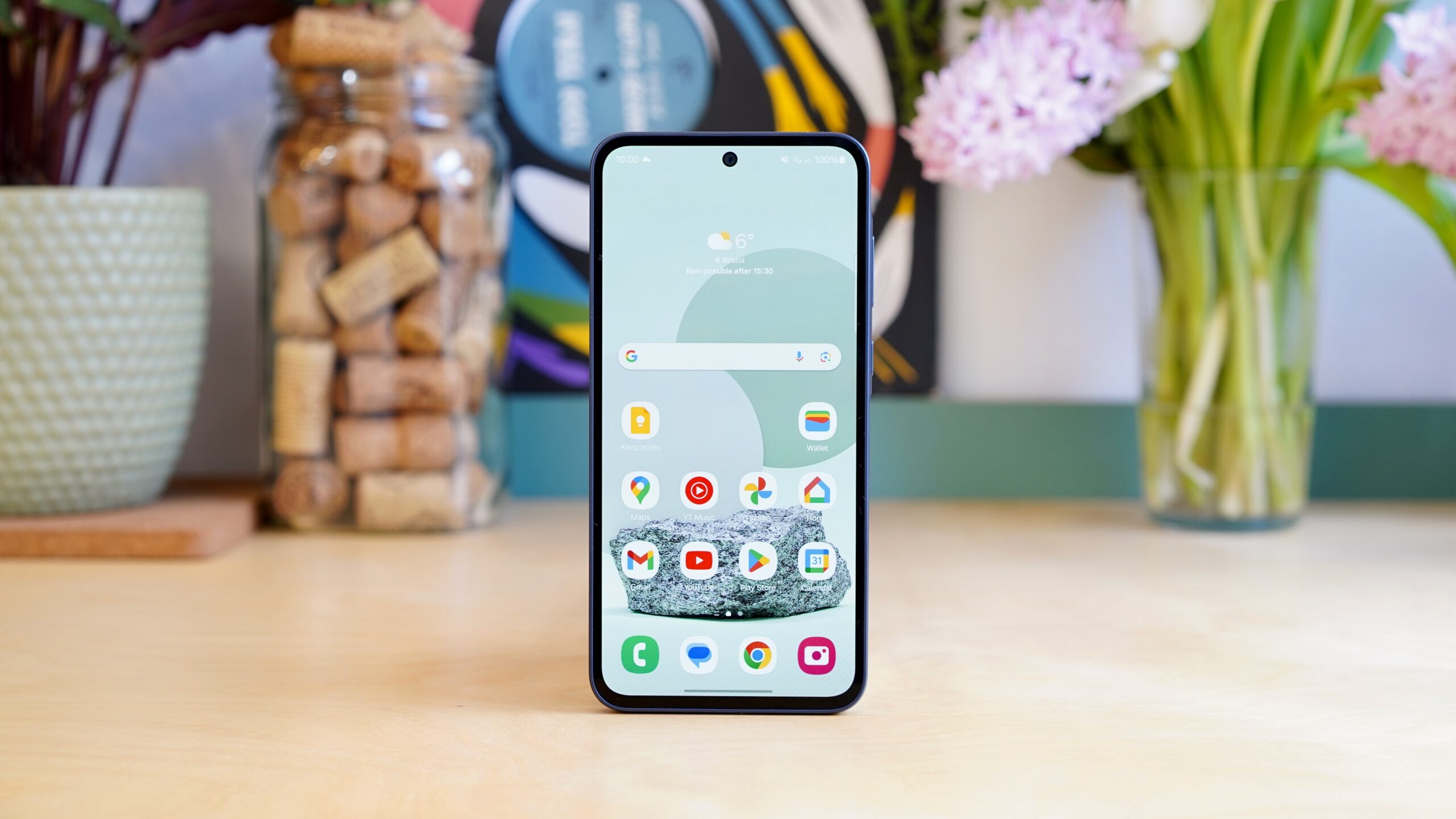Nothing Phone (2) Review
The Nothing Phone (2) is the phone Nothing should've released last year

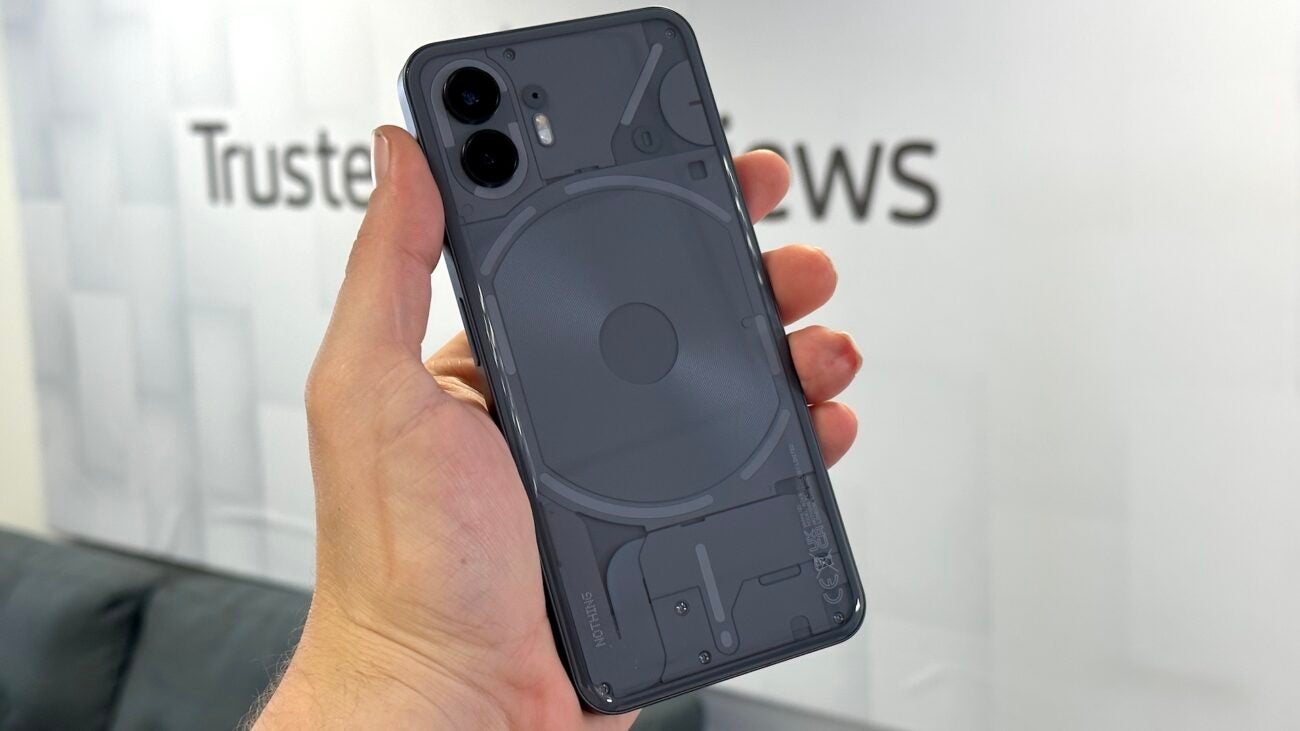
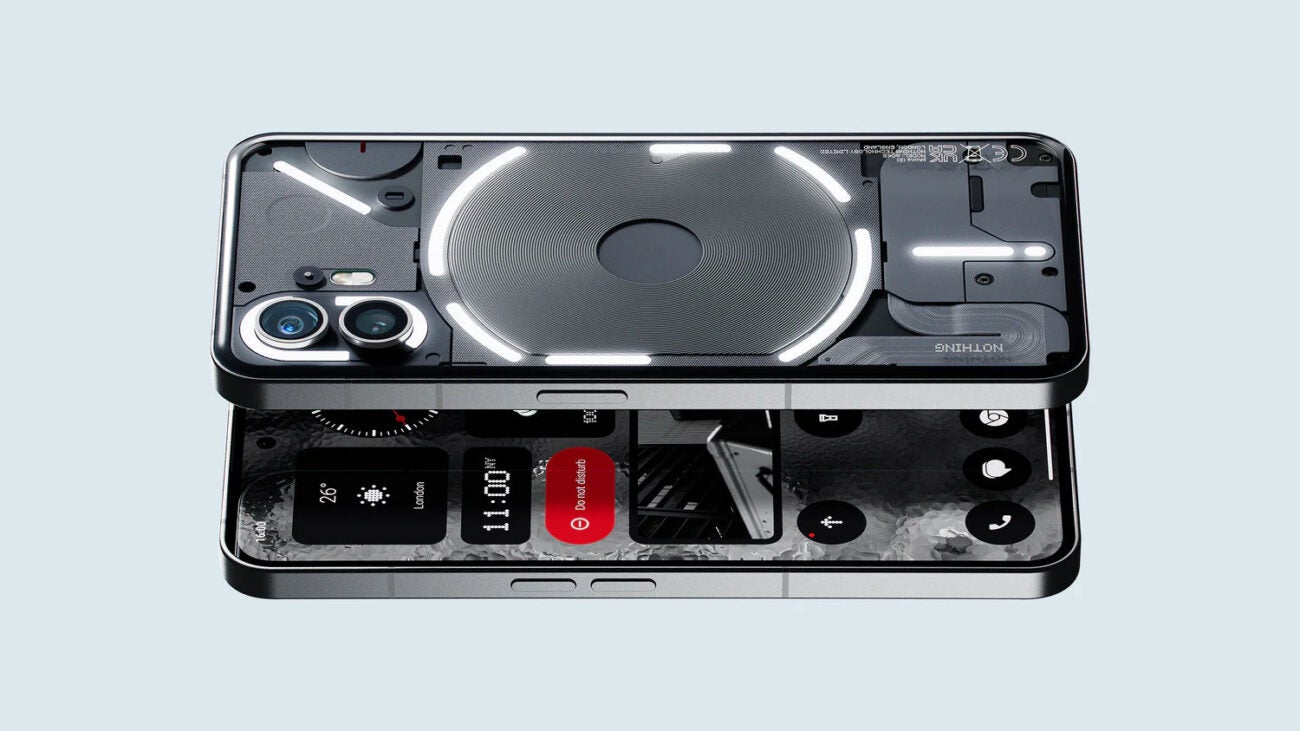
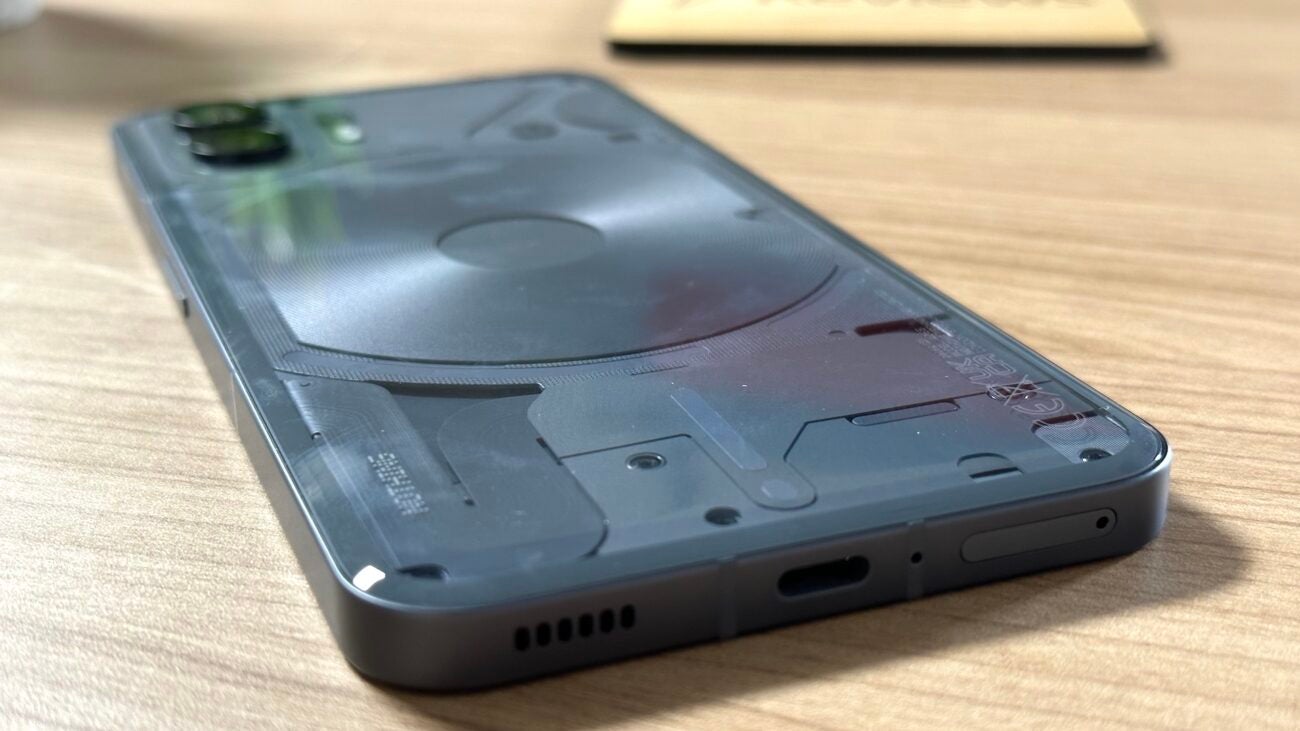

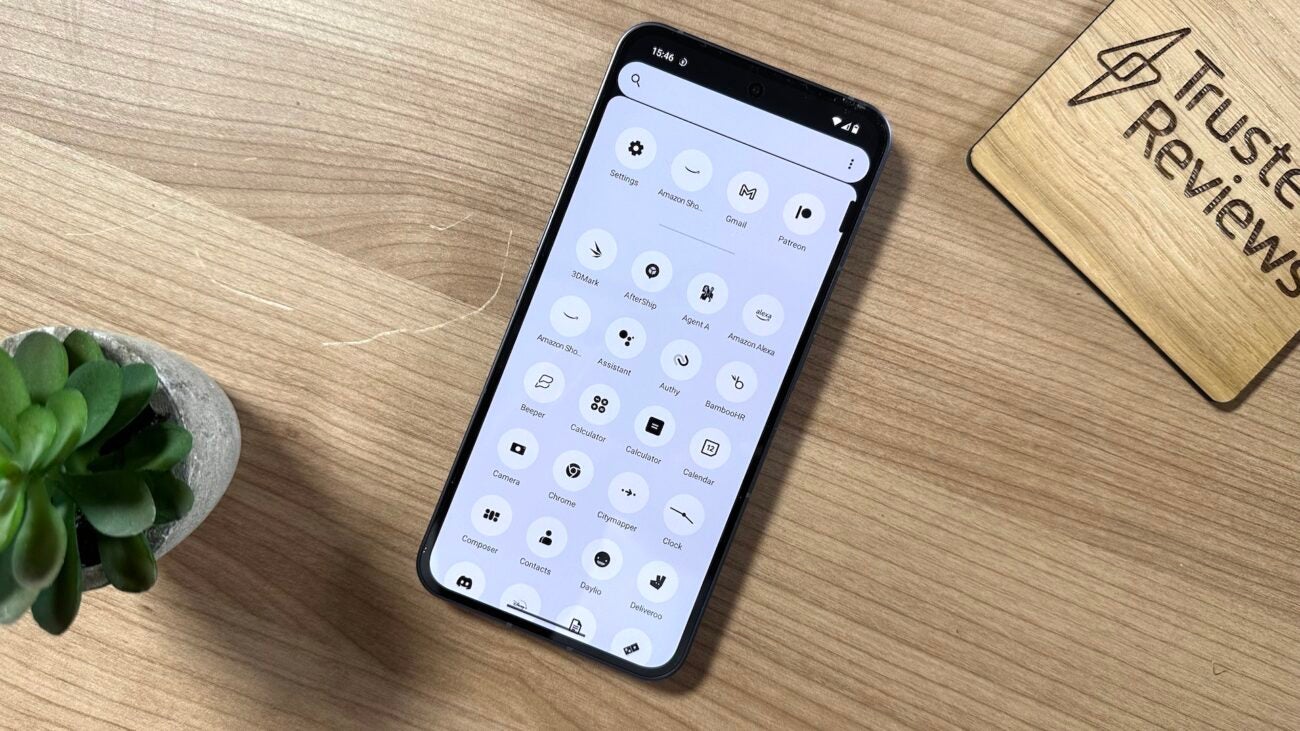

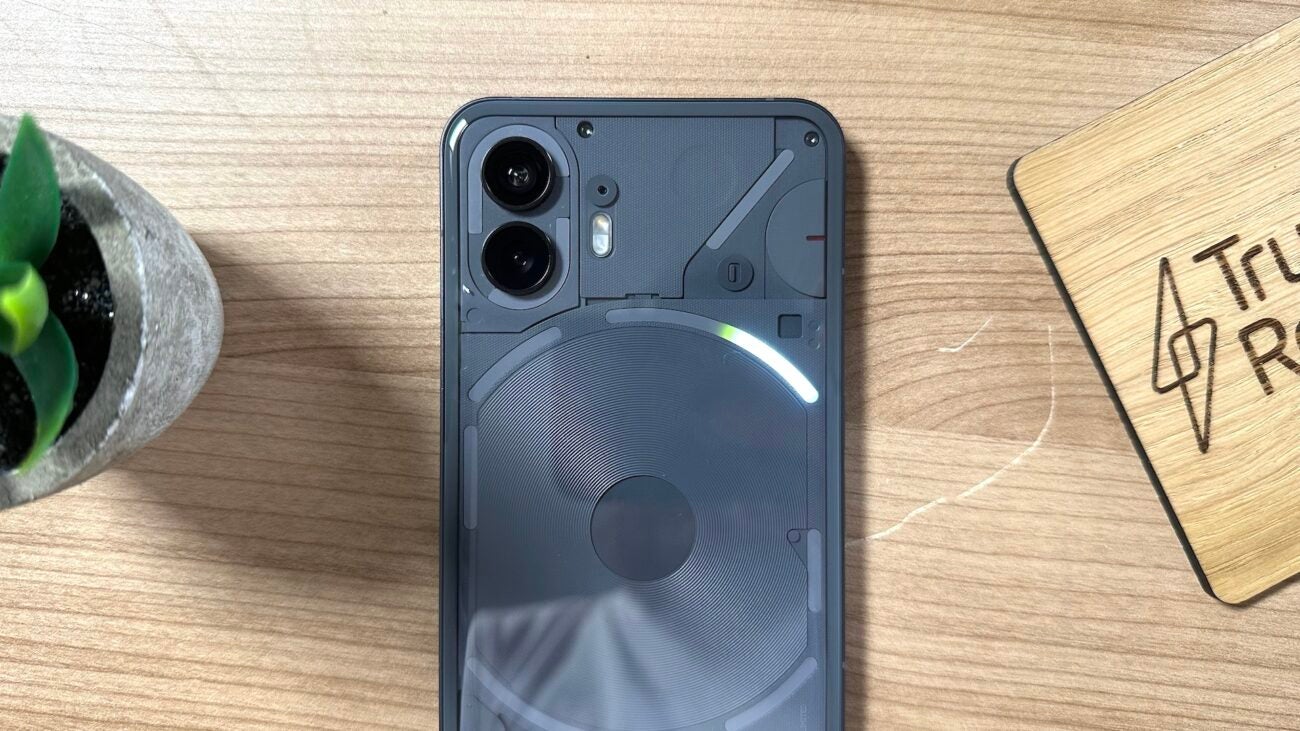




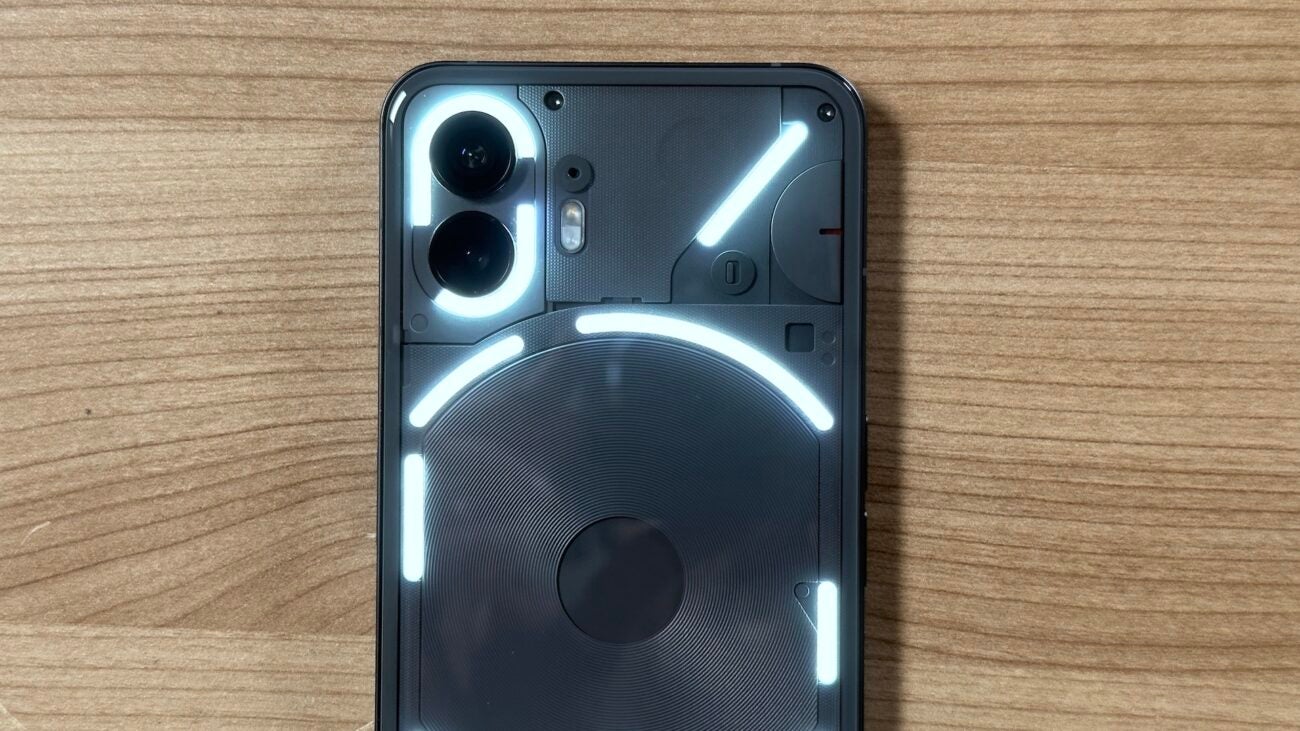
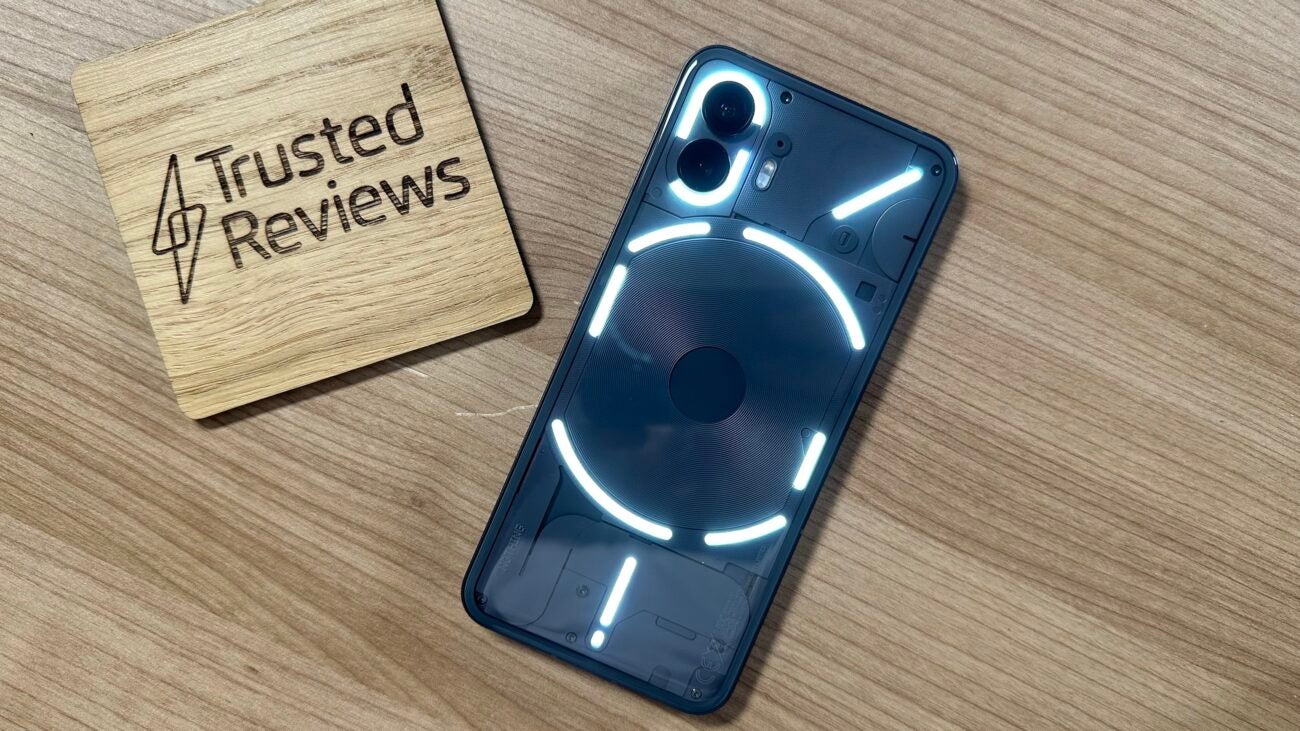

Verdict
Though it’s pricier than its predecessor, the Nothing Phone (2) is a tempting buy. It fixes the big complaints with the original while offering performance similar to that of flagships that cost much more. It also looks pretty cool with Nothing’s signature transparent LED-infused rear.
Pros
- Unique LED-laden design
- High-end 6.7-inch OLED display
- Snappy everyday performance
- Capable dual 50MP cameras
Cons
- Camera isn’t great in low-light conditions
- No charger in the box
- Much more expensive than Nothing Phone (1)
Key Features
- Snapdragon 8 Plus Gen 1 powerThe Snapdragon 8 Plus Gen 1 within the Nothing Phone (2) blows the similarly priced competition out of the water, better allowing it to compete with more expensive flagships.
- Unique designThe Nothing Phone (1) was famed for its unique design, and that’s just as true with the Nothing Phone (2). The famed transparent design and rear Glyph system are present and accounted for, making the phone stand out from the competition.
- High-end 6.7-inch displayThe Nothing Phone (2) has a phenomenal 6.7-inch OLED display with 120Hz refresh rate and LTPO tech that allows it to drop down to as little as 1Hz – something very rare at the mid-range price point.
Introduction
The Nothing Phone (2) is finally here. It looks the same as the Nothing Phone (1) and features a much higher £579/$599 price tag – but has nothing really changed?
Thankfully, that’s not the case.
Even with the higher price tag, the Nothing Phone (2) represents a tempting option in the mid-range market. It sports a flagship-level processor, a twin 50MP camera system and solid all-day performance that allow it to compete with some of the best phones, and let’s not forget about its stylish, transparent, LED-laden design that helps it stand out from the crowd.
Essentially, this is the Nothing Phone that Nothing would’ve liked to have released the first time around, fixing most of the big complaints with the budget-focused first-gen model.
Design and screen
- Same design as Nothing Phone (1)
- Minor improvements to Glyph interface
- High-end 6.7-inch 120Hz OLED display
- LTPO technology is impressive at this price
Nothing created a striking visual style with the Nothing Phone (1), and that’s very much the case with the Nothing Phone (2). Like the original, the Nothing Phone (2) sports a transparent rear reminiscent of early 00s tech like the Game Boy Advance, allowing you to see the components within powering the experience.
It’s just as clean as it was on the Nothing Phone (1), with no big changes to the componentry on show. I love being able to see the snaking cables running between the components, the large Qi wireless charging coil and the intricate way everything fits together. Everything matches too, with all components coloured in either white or grey depending on the finish you opt for – there’s no black option for now, but that might change in future.
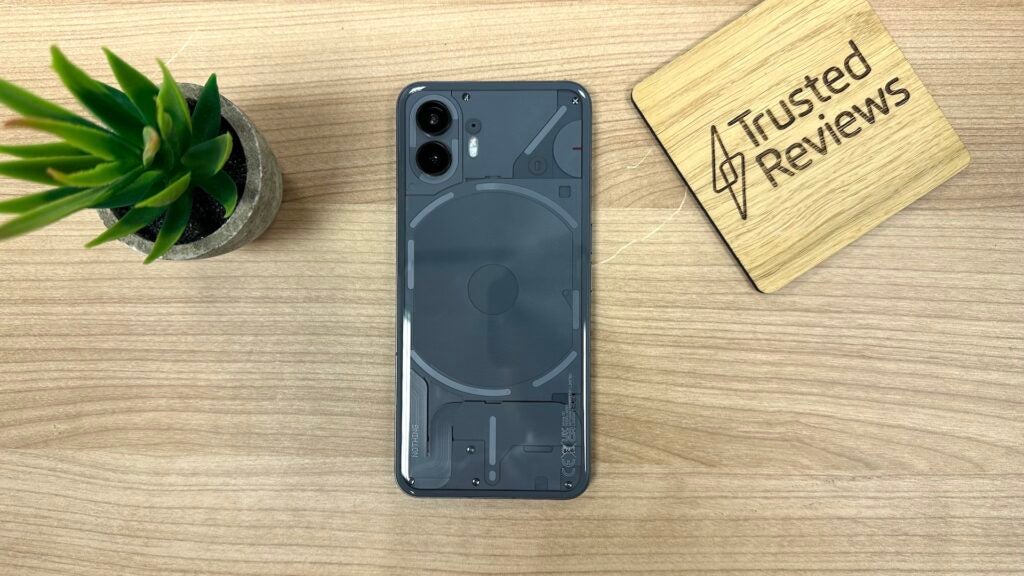
The transparent rear isn’t the only design feature borrowed from the Phone (1) either; the famed Glyph interface is also present and accounted for. Though the placement of the white LED strips is identical to that of its predecessor, there have been improvements to the underlying tech.
These range from small quality-of-life upgrades like auto-brightness tech to automatically dim or brighten the LEDs based on environmental lighting to more substantial upgrades like segmented LEDs within the strip that provide better control of the lighting within – but more on that a little later.
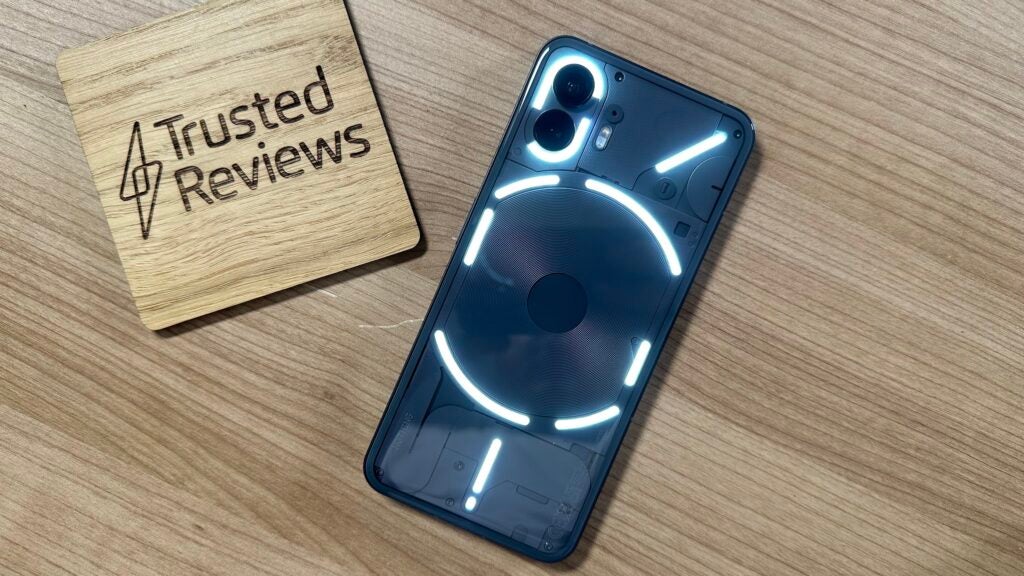
The core functionality of the Glyph interface remains the same, however, mainly being used as a flashy notification system to alert you to incoming messages and calls when facing screen-down. It can also be used as a soft fill light in the Camera app, and as a torch too.
I’ve not grown tired of the Glyph interface during my week of testing, though it did take me a while to get used to placing my phone screen down to truly take advantage of the system.
I also liked that I could flip the phone to mute the sound of calls and notifications when working, instead of relying solely on the LED lights to alert me of incoming notifications. Some might argue that it’s more distracting than a notification sound, but I didn’t really find that to be the case.
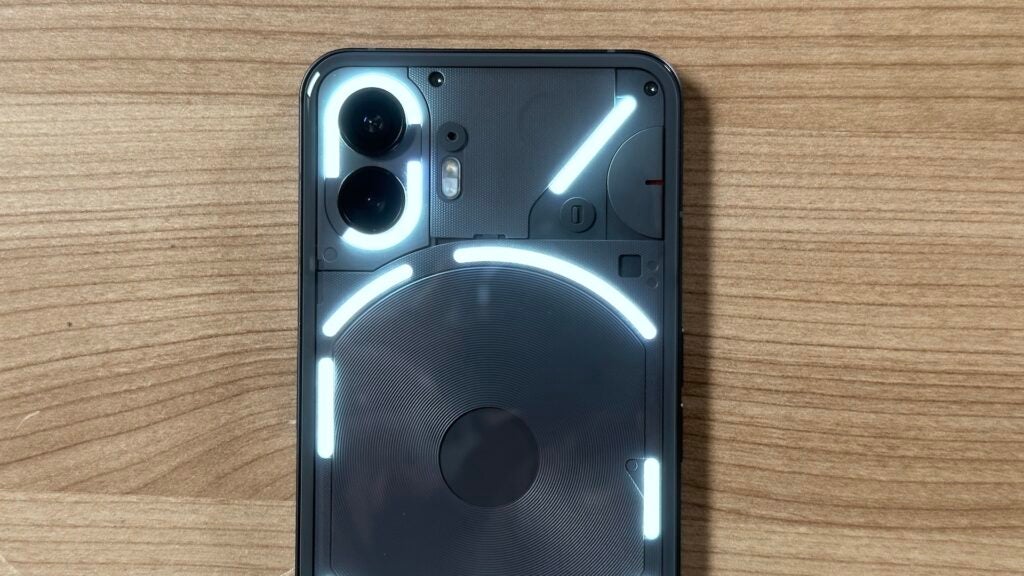
Essentially, if you liked the idea of the Glyph interface on the Phone (1) then you’ll be happy with what’s on offer from the Phone (2). If you didn’t, however, there’s very little here to change your mind.
Flashy lights aside, there are minimal changes elsewhere to the Nothing Phone (2)’s design. The display is a little larger, but the slim bezels of the display mean it doesn’t feel that much bigger than the 6.55-inch Nothing Phone (1), and the slight curvature to the rear panelling makes it fit more comfortably in the hand than its angular predecessor.
The materials are also premium for the price, sporting an aluminium frame and a glass rear protected by Corning’s Gorilla Glass, helping the phone feel much more expensive than it is.
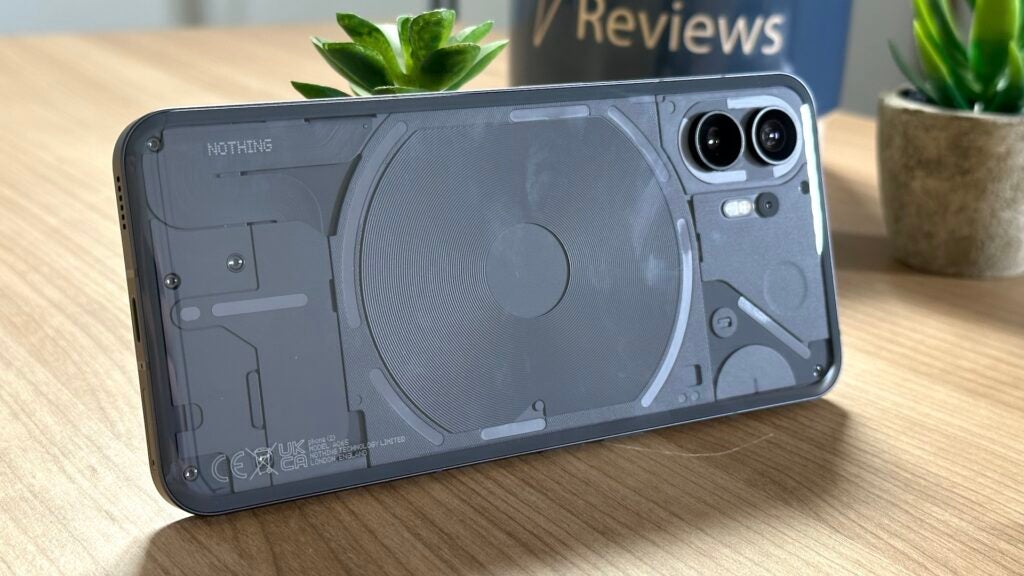
The Nothing Phone (1) was praised for its high-end display despite its affordable focus, and that continues with the Phone (2) – even with its higher asking price. You’ll find a slightly larger 6.7-inch OLED panel with a smooth 120Hz refresh rate and high-end LTPO tech that allows it to drop down to as little as 1Hz to save battery life. LTPO tech at this price point is very rare indeed, and Nothing has to be commended for it.
Super-smooth refresh rate aside, support for HDR10+ and a maximum brightness of 1600nits provide a great movie-watching experience in apps like Netflix and Amazon Prime Video, with vibrant colours and the deep, inky blacks that OLED tech is famed for. That brightness also makes for rather comfortable viewing outdoors, with no real issue using the phone on bright sunny days.
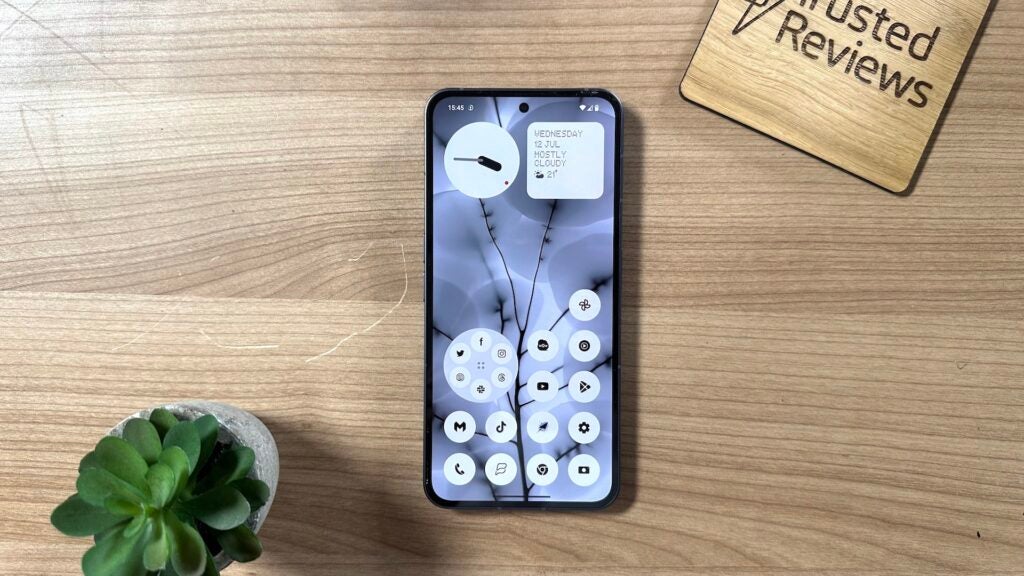
Size aside, you’ll find a fingerprint sensor within the display that works rather reliably, and there’s a centrally-placed hole-punch camera too.
Cameras
- New 50MP main camera is capable
- Great everyday performance from both lenses
- Not the best in low-light conditions
The Nothing Phone (1) was a great first stab at an affordable phone, but we found that the camera performance was hit-and-miss with rather odd tuning and performance issues. Thankfully, that’s not the case with the Nothing Phone (2) – in most situations, anyway.
Though you might be forgiven for assuming that the twin 50MP main and ultrawide lenses are identical to their predecessors, that’s only half true. While the Samsung JN1 sensor of the ultrawide sensor is identical, the main camera boasts a new Sony IMX890 sensor – the same as that of the £729/$699 OnePlus 11.
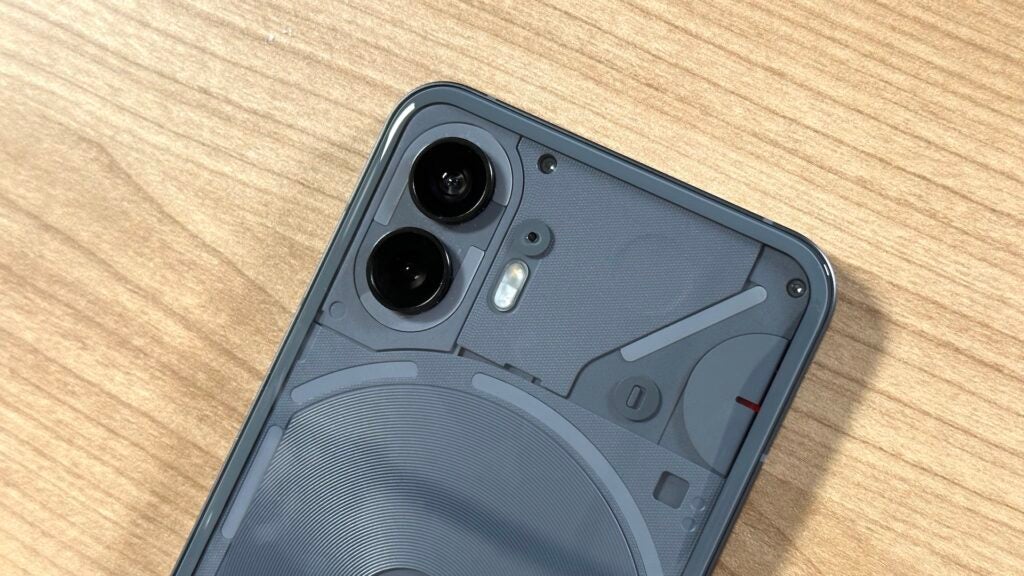
As well as improving the hardware, Nothing claims that an improved ISP allows the phone to capture up to 4000x more data than the Phone (1), and 8 frames of exposure captured in HDR shots compared to just 3 from its predecessor. It has also spent a lot of time tuning both cameras to get the most out of the system.
That’s all well and good, but how does that translate to real-world performance? Reader, I’ve been pleasantly surprised. I’ve used the Nothing Phone (2) to capture snaps for the past week and, generally speaking, it’s a reliable snapper that delivers a solid photo in most conditions – especially at its mid-range price.
In well-lit environments, the snaps are detailed, vivid and packed with light, thanks in part to the pixel-binning tech used by the sensor. I can simply point and snap without having to worry.









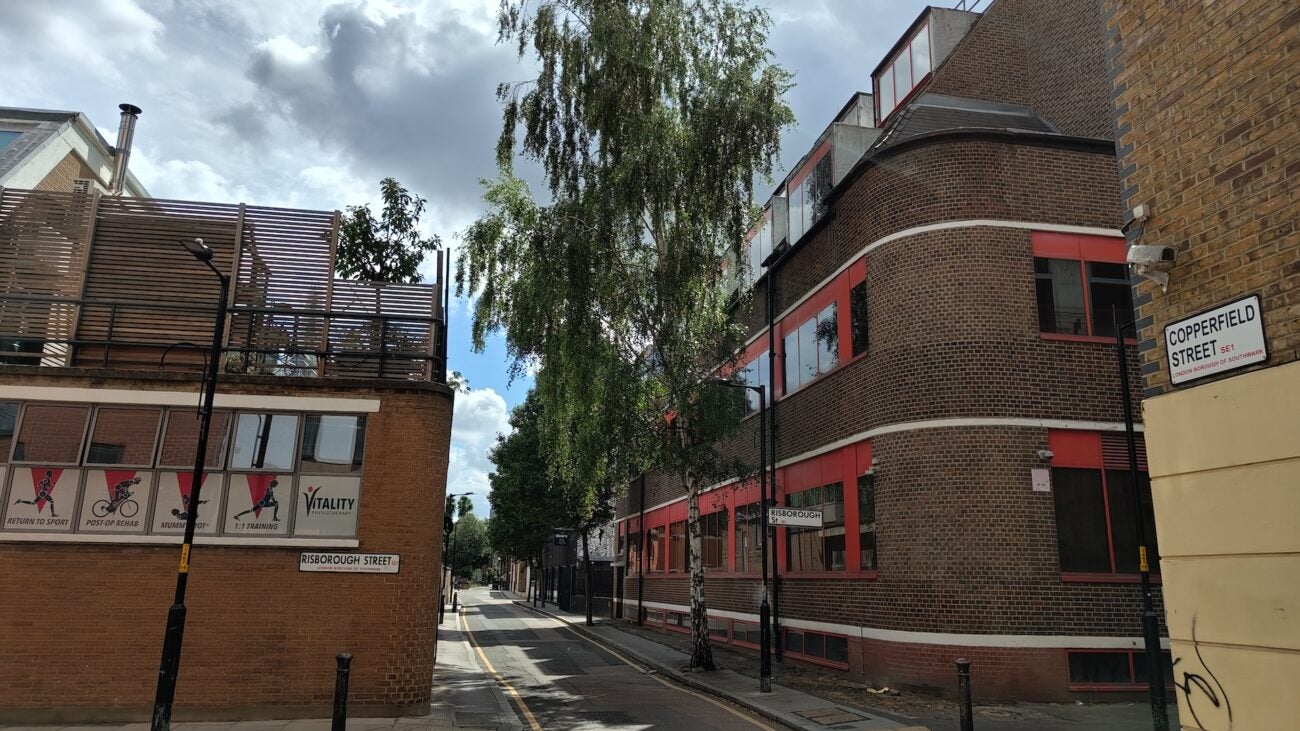
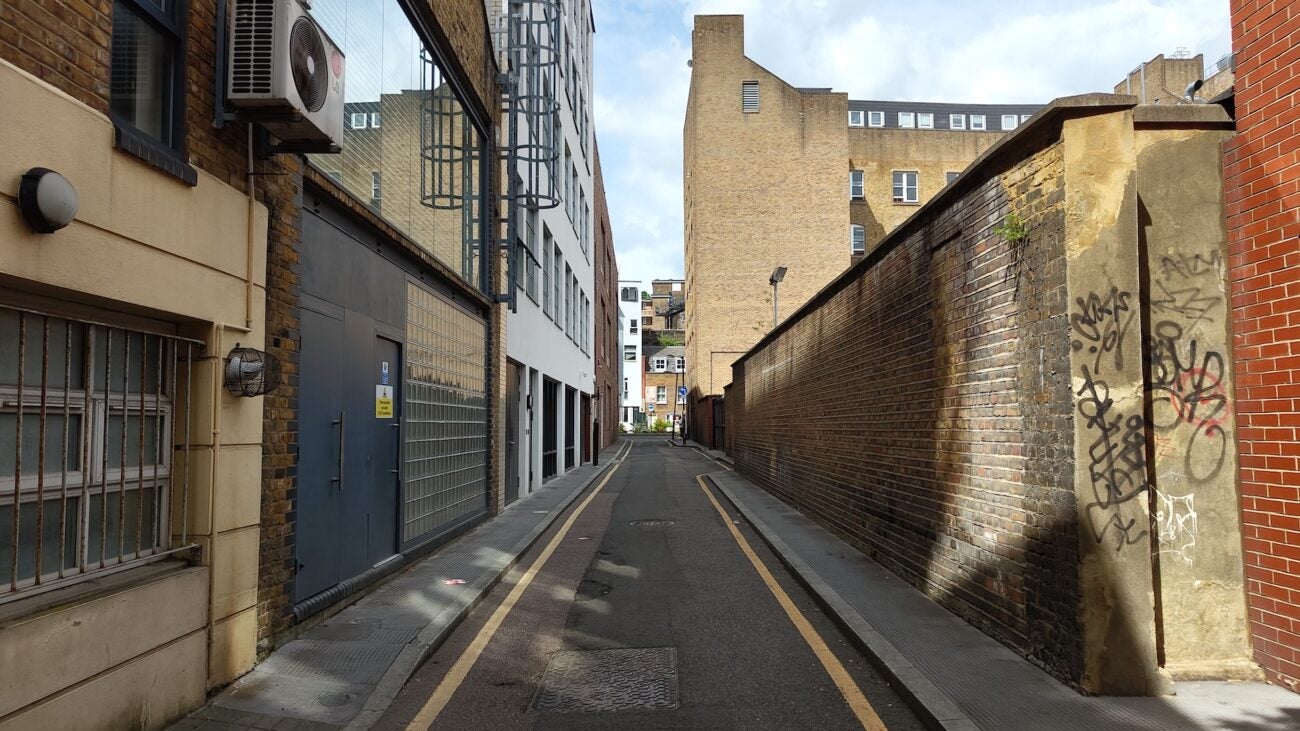
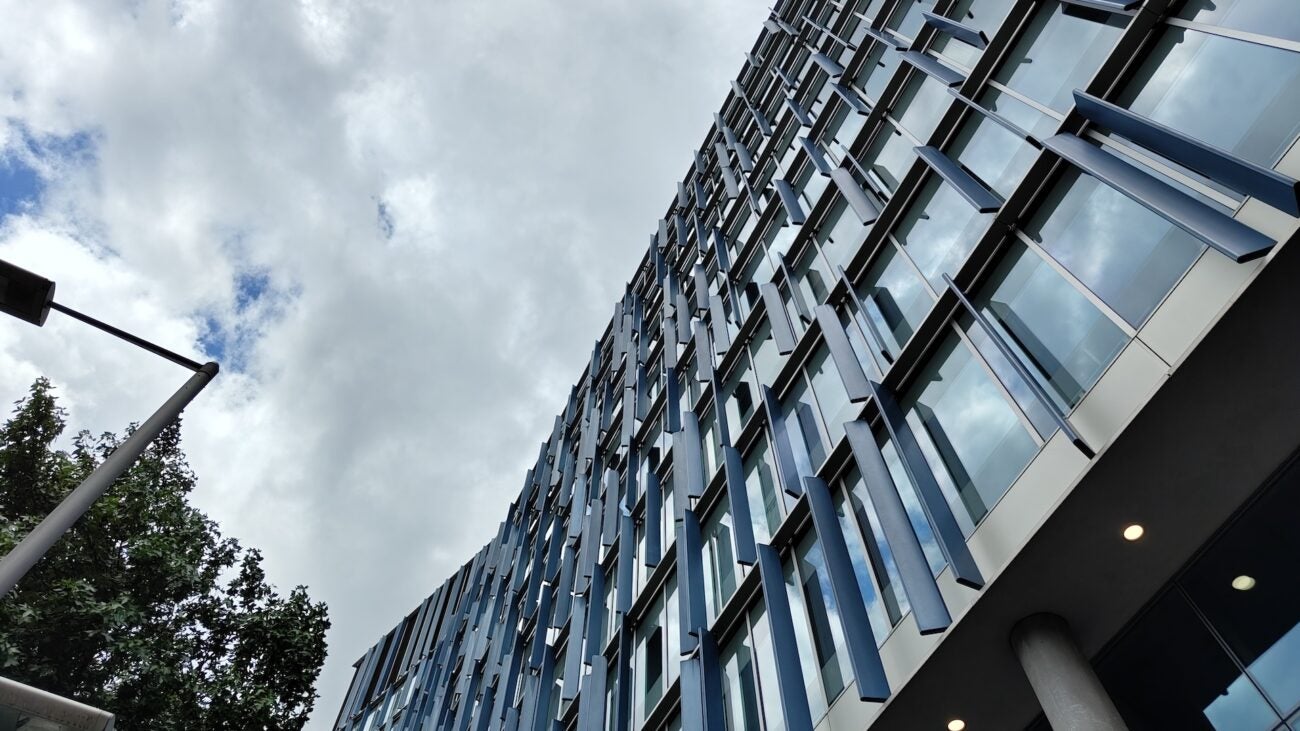
That’s just as true when taking photos of big London skyscrapers as it is when taking snaps of more detailed subjects like my furry German Shepherd, Luna. It’s the same with leafy trees, huge swathes of grass and other finer details in images, really showcasing the benefit of that improved ISP.
It’s great at capturing more subtle shifts in colour too, like the red-to-orange hue of sunlight shining through the trees at sunset, without being too OTT in terms of colour vibrancy. Samsung, I’m looking at you here. The colour profile is more natural than some alternatives, though still punchy enough for sharing on social media.
The Nothing Phone (2) won’t be winning any awards for the best camera phone for low-light photography any time soon, especially with 1-inch sensors floating around at the high end of the market, but it’s still capable of pulling extra brightness and detail out in darker shots with a nearby source of light. It can’t quite handle true low-light scenarios, however, lagging behind the likes of the Pixel 7a.
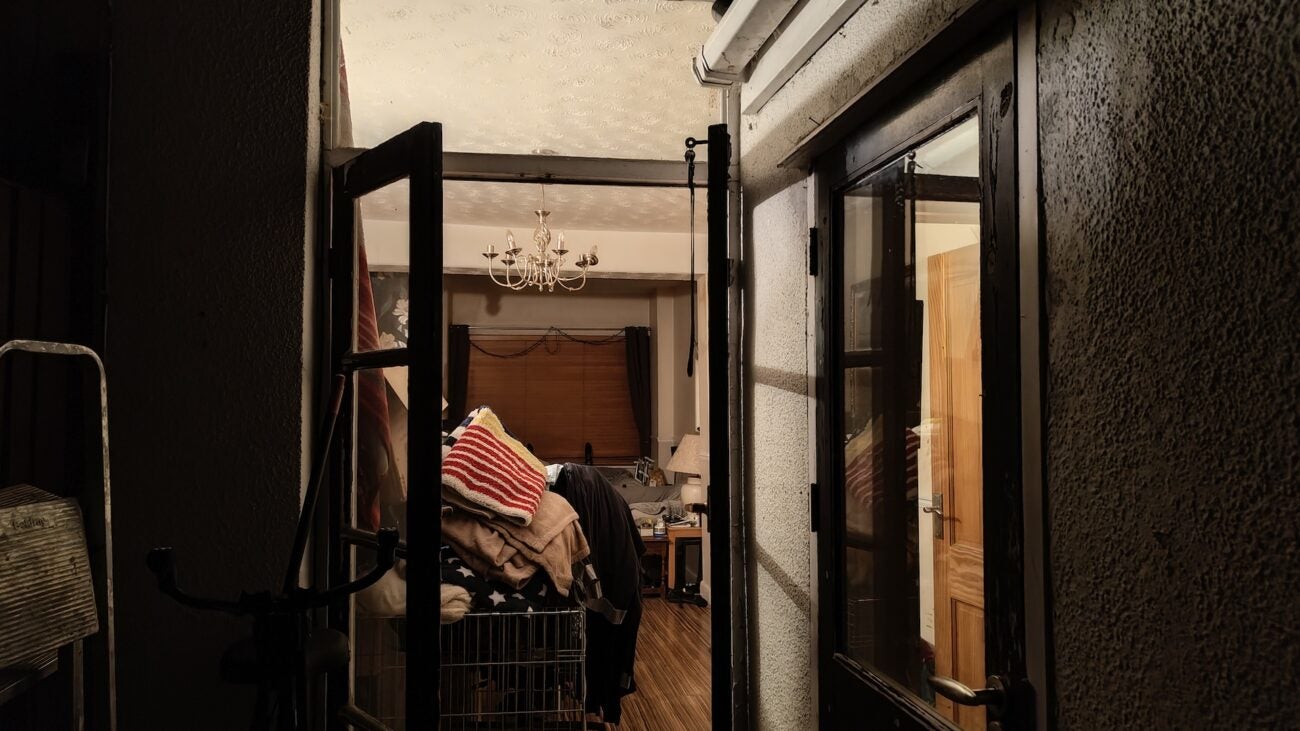


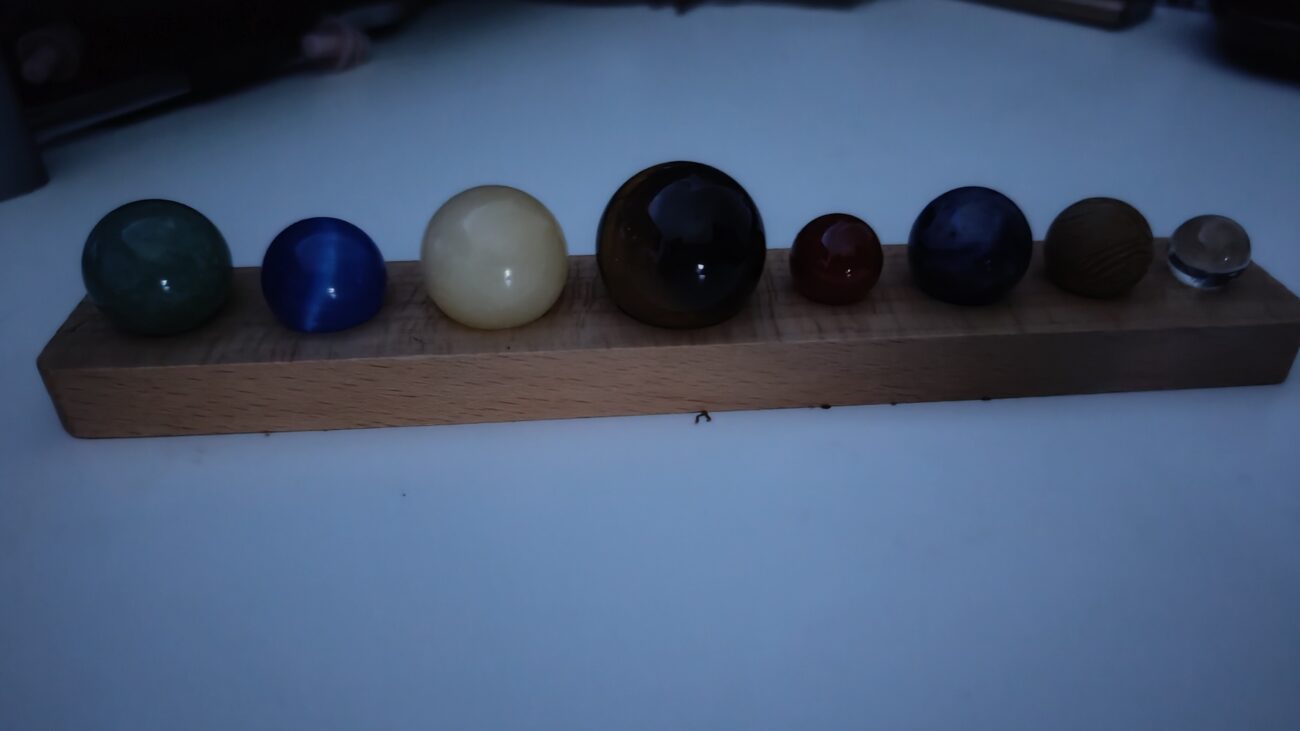
We had complaints about the 50MP ultrawide on the Nothing Phone (1), with a notable change in colour tuning compared to images captured from the primary lens, but it appears Nothing has spent a lot of time fixing this issue with the Phone (2) with near-identical colours across the two snappers.
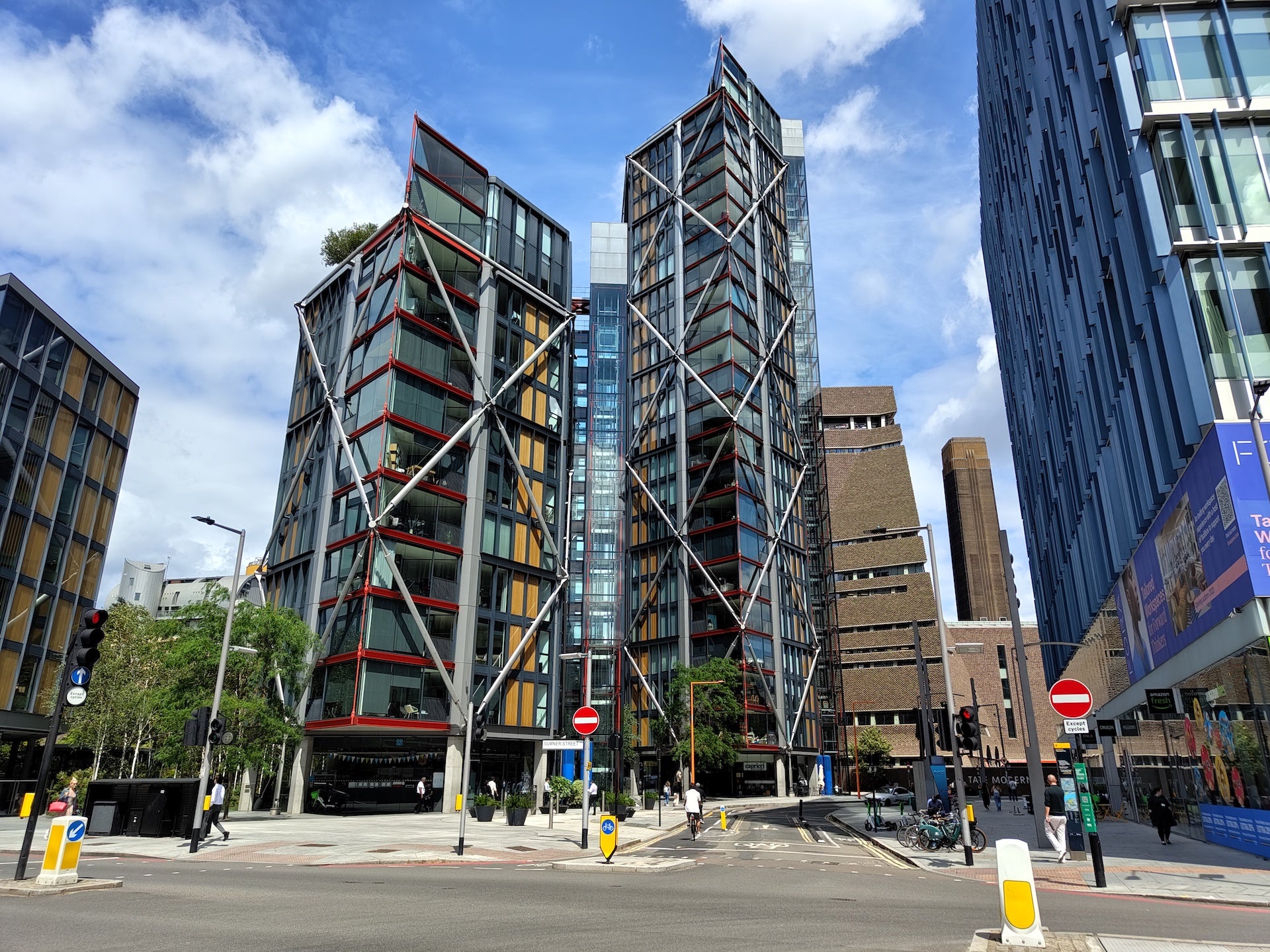
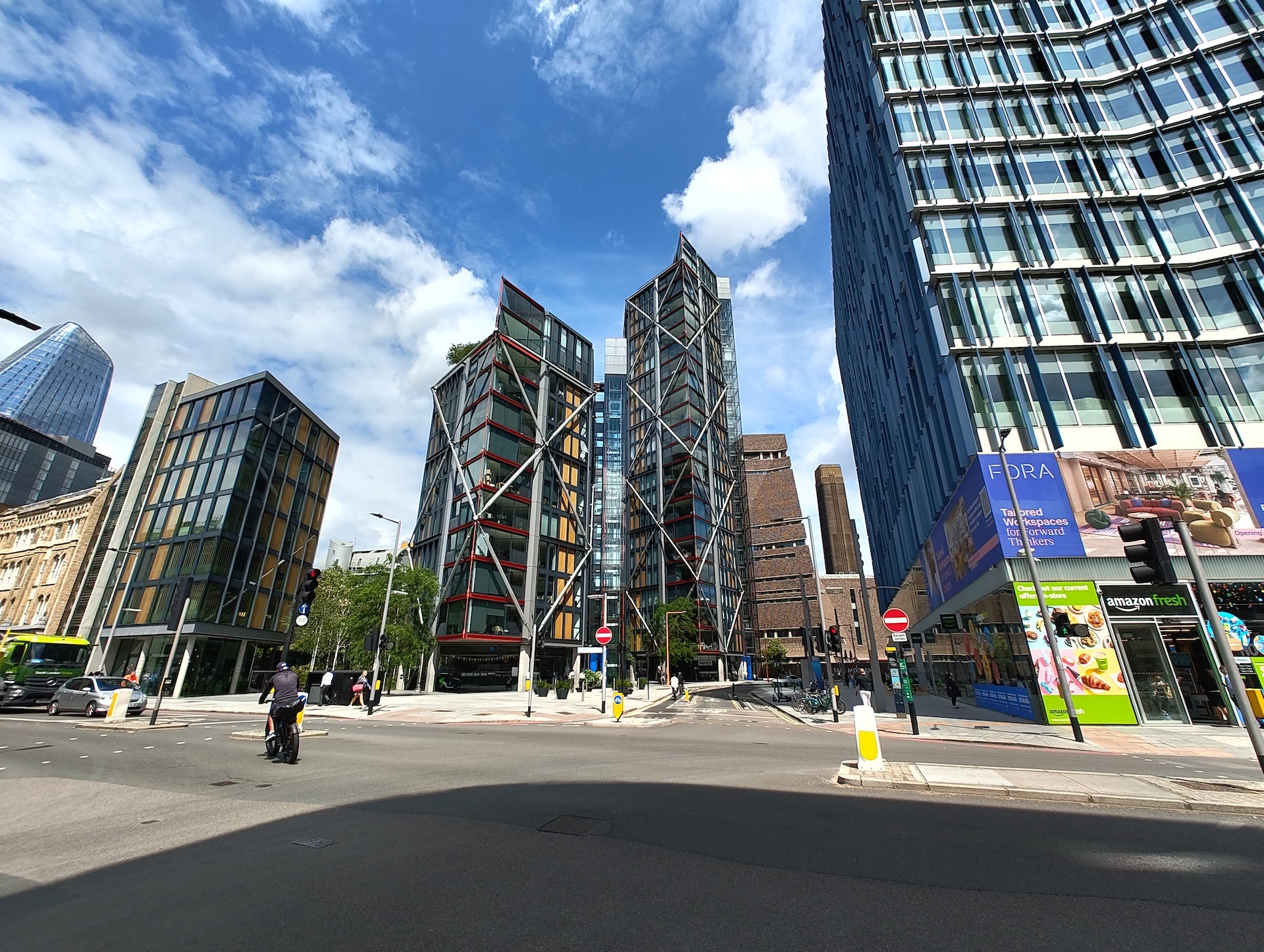
The matching 50MP resolution also means you aren’t dealing with a drop in resolution like many mid-rangers and their low-res ultrawide lenses, delivering crisp shots packed with detail. In fact, they’re pretty in line with the images captured from the main lens, even when capturing HDR shots. There is still a bit of distortion around the edges of ultrawide shots, but it’s not too distracting.

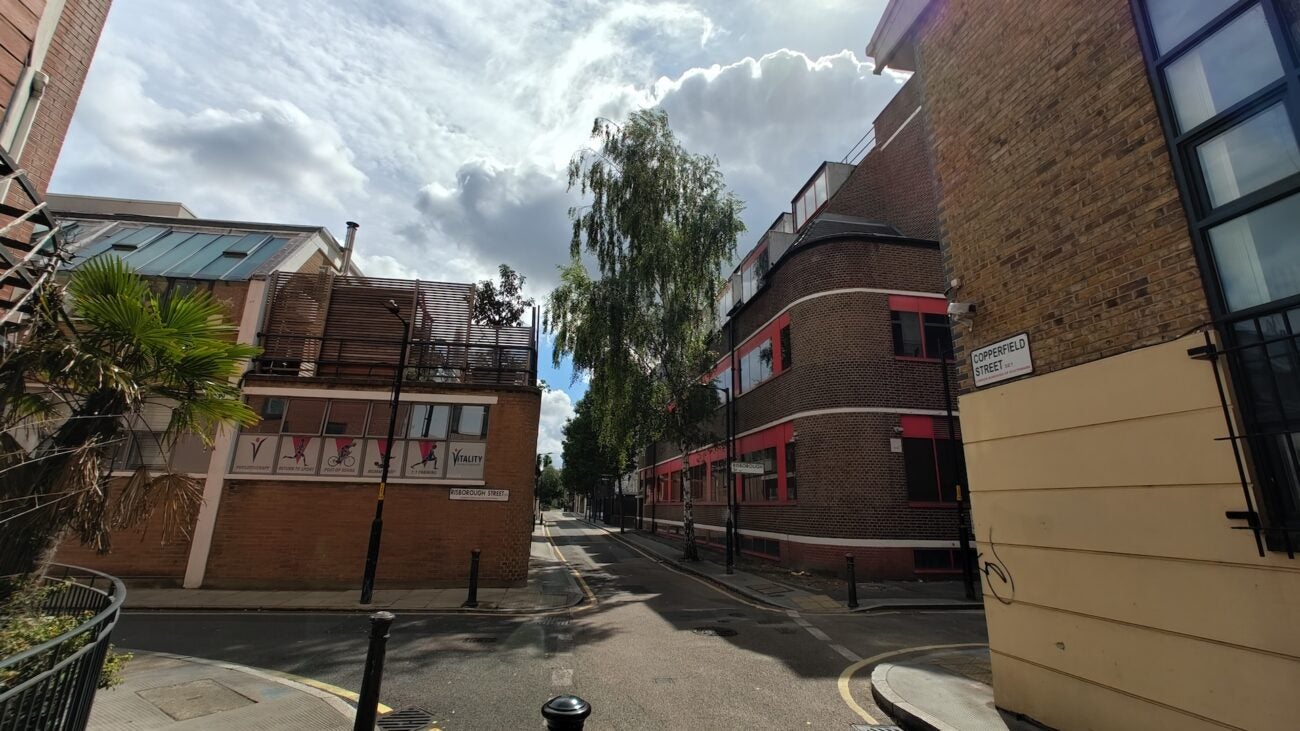
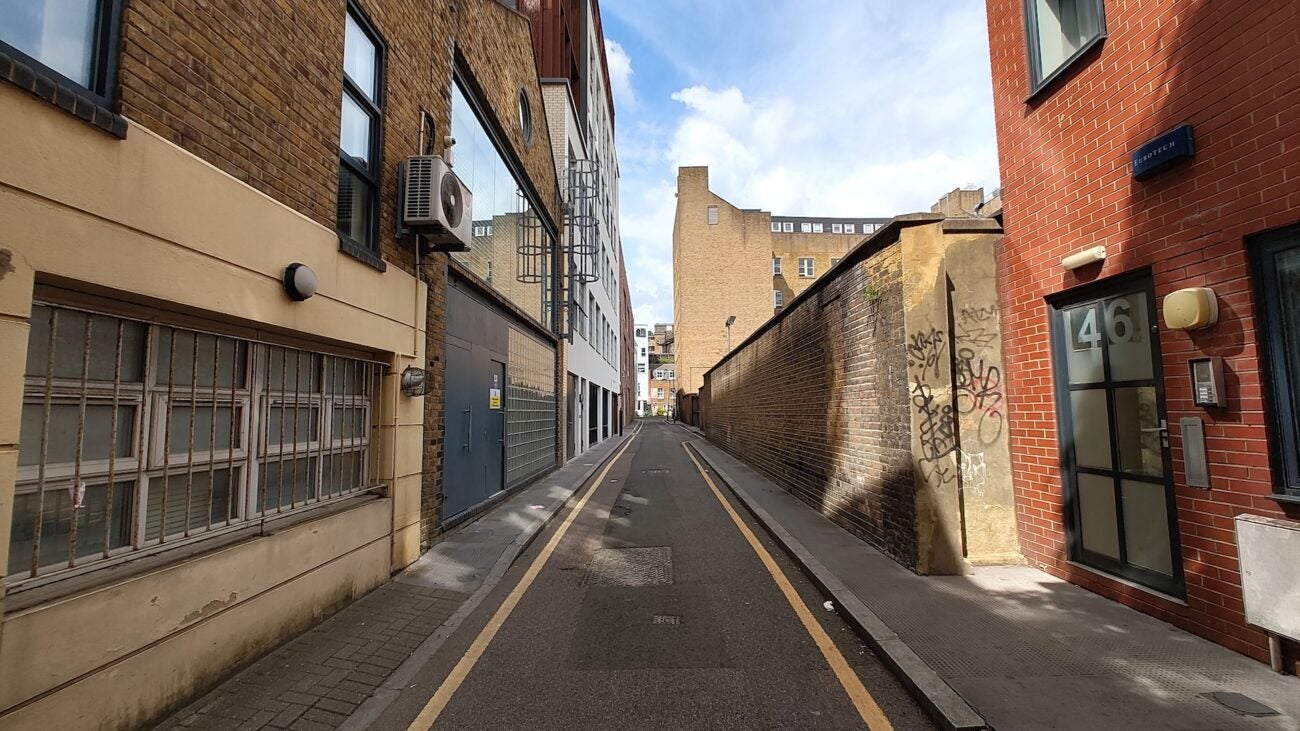
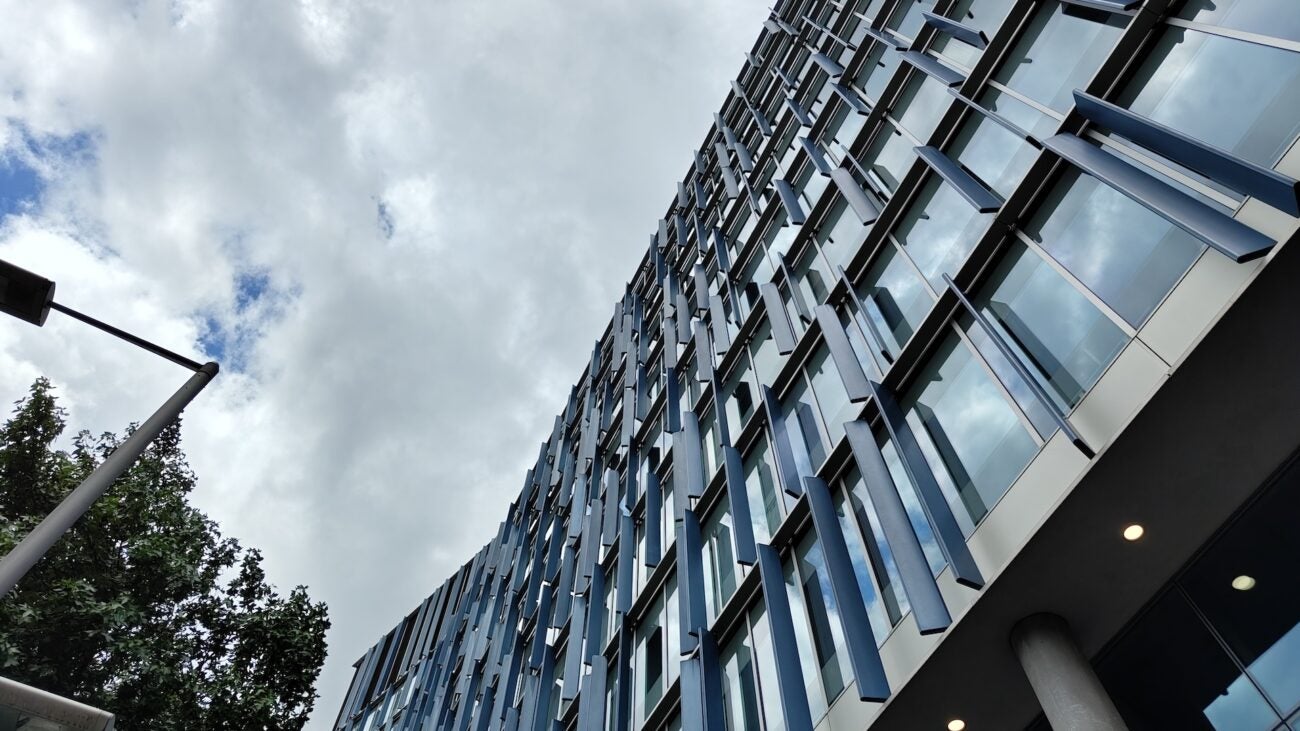
When it comes to selfies, users can look forward to a boosted 32MP selfie camera – up from 16MP. That should more than suffice for video calls and quick selfies with a natural bokeh, though shots can sometimes come out looking a little soft, likely down to the fixed focus of the snapper.



Video-wise, you’re looking at a boosted 4K@60fps capture with decent stabilisation, though for truly shaky videos, the dedicated Action Mode comes in handy. It’ll crop your video in more than standard videos, but the super-smooth stabilisation on offer is a worthy trade.
Performance
- Nothing OS 2.0 based on Android 13
- New OS features and Glyph interface features
- Snapdragon 8 Plus Gen 1 is very capable
The Nothing experience is defined not only by the hardware but the software in the form of Nothing OS. The first iteration of Nothing OS, based on Android 12, was visually pleasing with a heavily stylised interface with dot-matrix-style icons and widgets, but aside from that, it was stock Android. There was nothing that special about Nothing OS aside from its look.
Well, that has changed with Nothing OS 2.0 based on Android 13 found on the Nothing Phone (2). The greyscale dot-matrix visual style is very much still present and accounted for, helping the phone stand out from practically every other Android skin out there, but there are now new features that come with it.
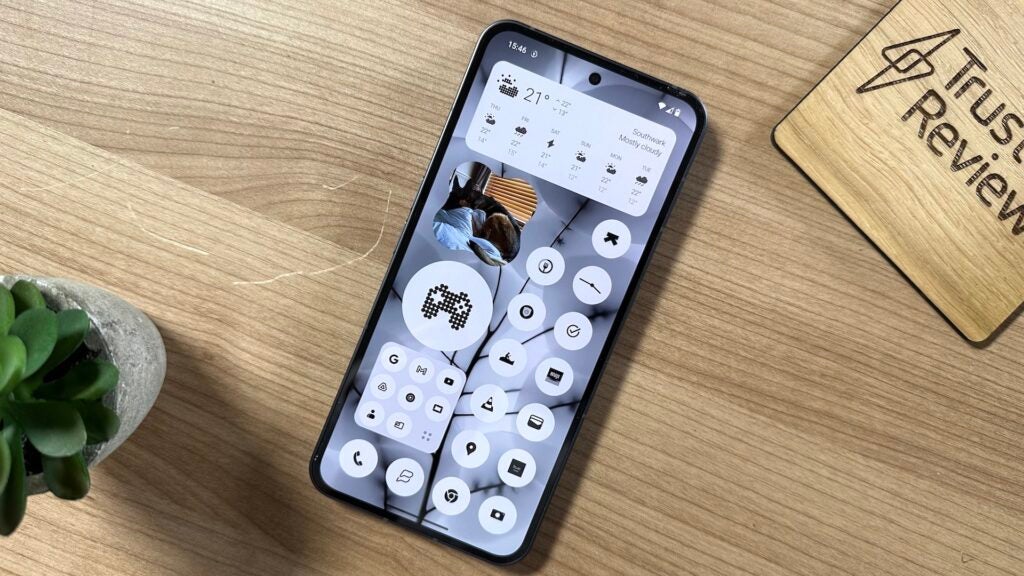
Like with iOS 16, you can now add widgets to both the lock screen and always-on display, providing at-a-glance info that stops you from mindlessly unlocking your phone and scrolling. It is restricted to official Nothing widgets for now, limiting just how helpful the feature can be, but the company claims that third-party support is on the way.
There are also a handful of new Glyph-themed features to take advantage of thanks to the improved rear lighting system. This includes the ability to display the current volume levels via the LEDs, as well as to display status information from apps like Uber so you can tell if your ride is on the way or outside, though these are rather gimmicky.
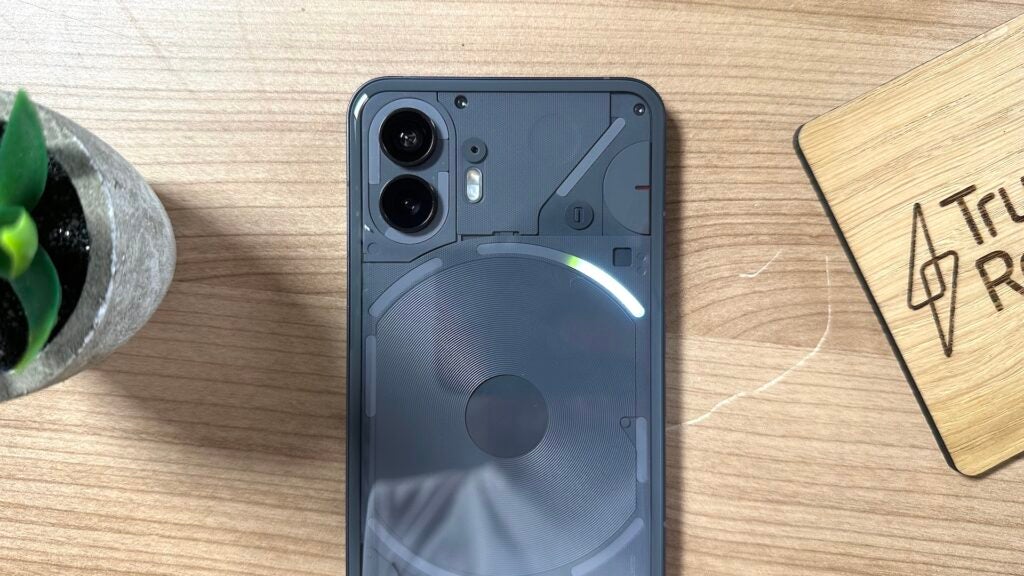
The rear LED lights can also function as a visual timer, although the process of accessing it through the Settings app and Glyph menu is somewhat inconvenient, and you can’t create a home screen shortcut for the functionality at present.
For most, though, it’s the Glyph Composer that’ll be a favourite. The composer essentially provides a synthesiser-style interface that allows you to create your own custom visual ringtones, tying together sounds and the rear LEDs into one.
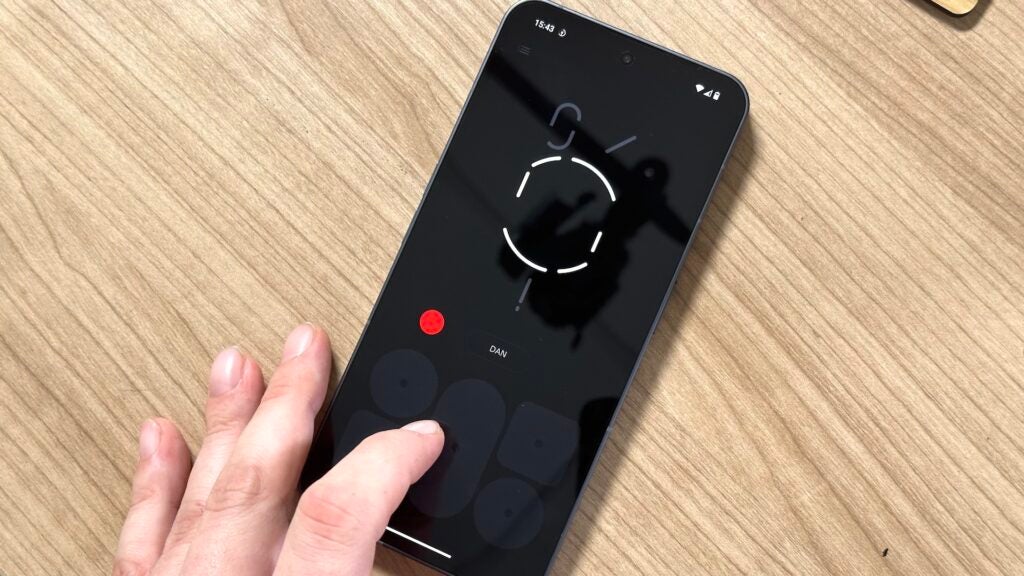
There are several sound packs available right now, with Nothing working with artists like Swedish House Mafia and a yet-unnamed British acoustic artist to bring themed sound packs for users to remix a little later down the line. For a phone that relies so heavily on the glyph interface, it’s a fun, innovative little feature.
Nothing has also accomplished the remarkable feat of delivering greyscale Nothing icon support for all apps, even if they don’t officially support it. No other manufacturer, not even Google, has achieved this. Although some icons may exhibit slight pixelation, the monochrome aesthetic remains intact without any jarring pops of colour.
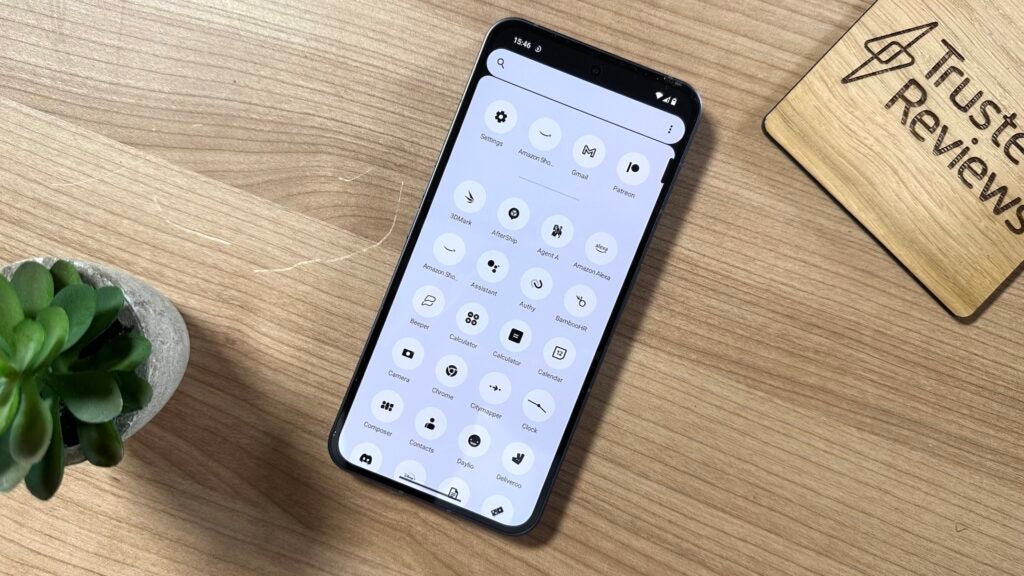
It’ll continue to get better over time too, with the promise of 3 OS upgrades and 4 years of bi-monthly security patches taking the Nothing Phone (2) all the way to Android 16.
Let’s talk internals. One of the biggest improvements of the Phone (2) compared to its predecessor is processing power. The Snapdragon 778 Plus 5G chipset was fine for the £399 price tag, but the Phone (2) takes it to the flagship level with the Snapdragon 8 Plus Gen 1.
Granted, it’s not the latest flagship processor, but the 8 Plus Gen 1 was a very popular chip due to its combination of power and efficiency. That’s paired with either 8- or 12GB of RAM and either 128, 256 or 512GB of storage depending on the variant you opt for. For reference, I’ve been testing the mid-range 12GB/256GB model.
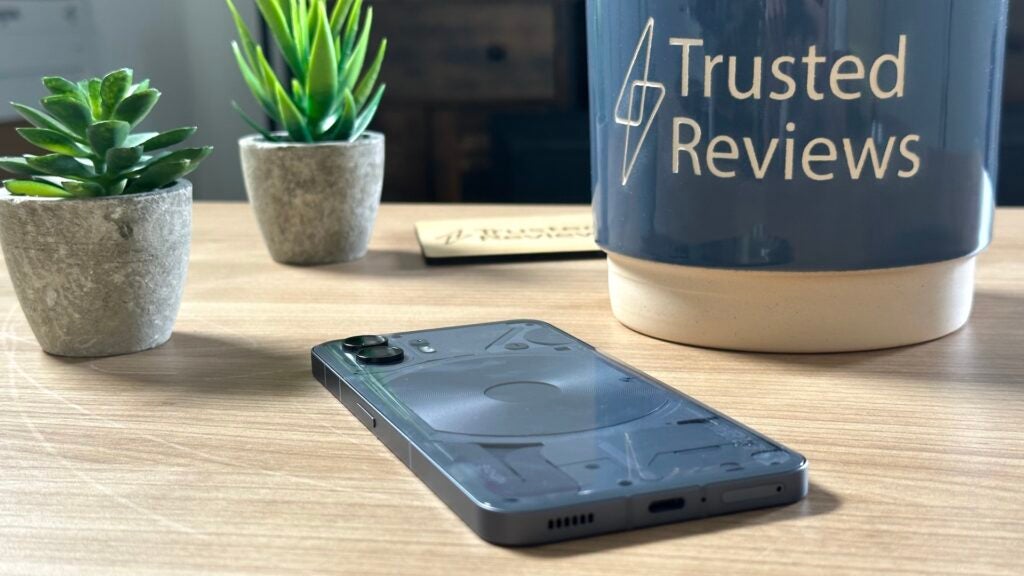
That high-end processor, unsurprisingly, delivers top-notch everyday performance, with the Nothing Phone (2) comfortably able to handle anything I threw at it – and at a rapid pace too. Everything feels instantaneous, whether it’s opening or switching apps or taking snaps.
High-end gaming titles like Call of Duty Mobile run well, even with high-level graphics enabled. It can get hot, however, especially after longer periods of play. That’s fine for casual gamers, but dedicated mobile gamers might want to consider a gaming phone like the Asus ROG Phone 7 Ultimate.
Warmth aside, it’s a day-and-night comparison compared to the Nothing Phone (1) with the Nothing Phone (2) easily able to compete with flagship-level smartphones that cost much more, leaving the vast majority of mid-range options in the rear-view mirror – and our benchmark tests back that up.
Battery life
- Comfortable all-day battery life
- 4700mAh battery
- 45W charging
With features including an LTPO-enabled display, the impressively efficient Snapdragon 8 Plus Gen 1 chipset and a larger 4700mAh battery than its predecessor, it should come as no surprise that the Nothing Phone (2) manages to keep on going no matter what you throw at it – and that’s with those bright LEDs on the rear.
To say that the phone alleviated my battery anxiety would be an accurate statement, with the phone able to power through an 18-hour day with 4 hours of music playback and a phone conversation that lasted over an hour as well as the regular combination of sending texts, scrolling through Twitter (and now Threads!), replying to messages on WhatsApp, taking snaps to test the camera and even scrolling through TikTok for over an hour.
The result? I still had about 35% charge left by the time I went to bed.
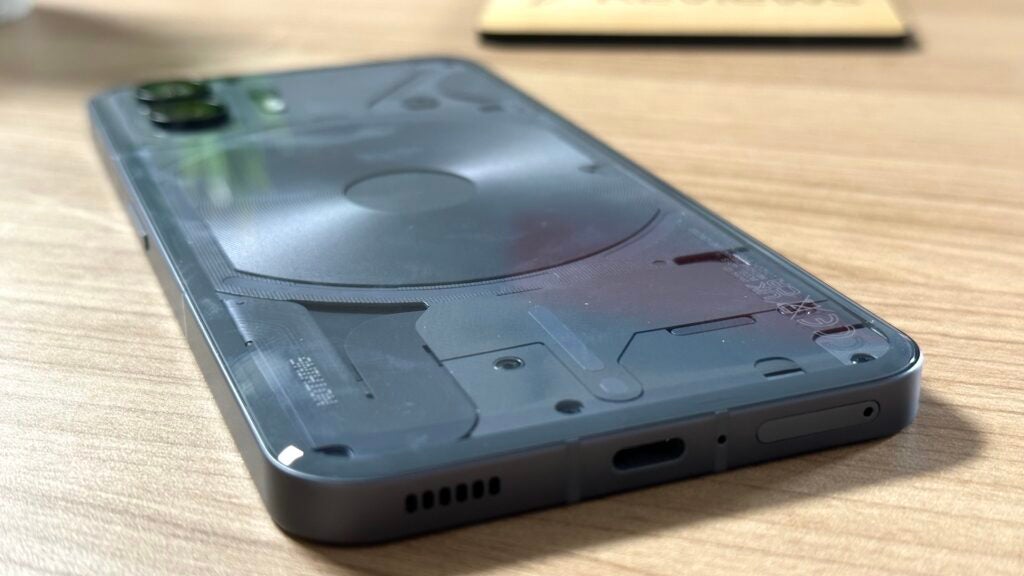
And that’s with a full-on day – days that I used the phone less fared even better, with the Nothing Phone (2) easily able to reach the end of the day with close to 50% charge. That essentially means that, if you’re not a power user, you can comfortably squeeze two days of use out of the phone before it’d need a top-up.
The phone charges via USB-C and comes with a snazzy semi-transparent USB-C cable in the box, but you won’t find a 45W charger to take advantage of the phone’s fast charging functionality. That was more acceptable at the Nothing Phone (1)’s £399 price tag than the Nothing Phone (2)’s £579 price tag, but considering it’s available for around £20 at Amazon, it’s not too much of an issue.
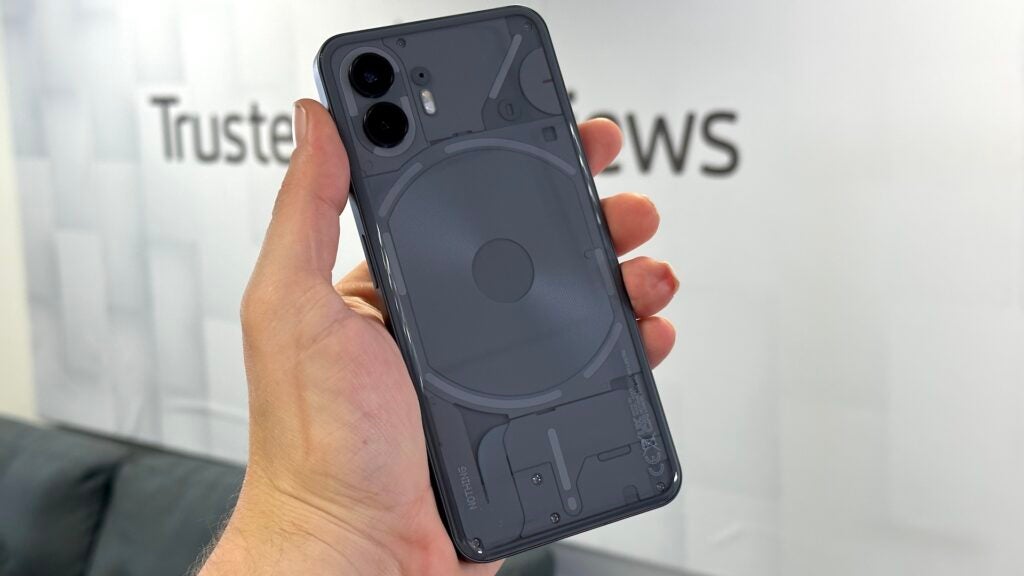
I didn’t have a Nothing charger to hand but I used a 100W UGreen charger I had handy to juice the phone up as quickly as possible. Doing so, I saw 43% in 15 minutes, 75% in 30 minutes and a full charge in just under an hour, but this will likely depend on the charger in question.
15W wireless charging has also made a comeback – far from a given at the mid-range – with 5W reverse wireless charge also available for those emergency headphone top-ups.
Latest deals
Should you buy it?
You want a phone that stands out:
Aside from its predecessor, the Nothing Phone (2) doesn’t look like anything we’ve seen before. The transparent design, Glyph interface and heavily stylised Nothing OS certainly make a statement.
You prioritise low-light photography:
While the rear camera system is a capable one, it doesn’t do the best job at low-light photography with options like the Pixel 7a capturing more light, colour and detail than Nothing’s option.
Final Thoughts
Some might lament the price increase of the Nothing Phone (2), but I think it’s a worthy trade-off for a phone that looks and feels just as stylish as the original but with enough power to compete with flagship-level phones that are much more expensive.
The Snapdragon 8 Plus Gen 1 chipset delivers this in bundles, beating most of the best mid-range competition in benchmarks. It also has the additional benefits of the 8 Plus Gen 1’s power efficiency which, when coupled with a large 4700mAh cell doesn’t struggle to last all day, with the ability to stretch well into a second day with average use.
The twin 50MP snappers are another highlight, with the main camera delivering consistently great-quality snaps in most scenarios, though it’s not quite as capable as the likes of the Pixel 7a in low-light scenarios. The 50MP ultrawide also boasts significant improvements, particularly in the colour tuning department, to better match the main sensor.
The Nothing OS experience is a heavily stylised one that won’t be for everyone, but there is a lot to like. It not only looks visually different to practically every other Android skin out there, but it brings helpful features like widgets on the lock screen and AOD. It also brings Glyph-focused features like Composer to bring more functionality to that cool rear LED lighting system.
Essentially, if you’re looking for a great performer that looks different to practically every other phone around, the Nothing Phone (2) is the one to go for.
How we test
We test every mobile phone we review thoroughly. We use industry-standard tests to compare features properly and we use the phone as our main device over the review period. We’ll always tell you what we find and we never, ever, accept money to review a product.
Find out more about how we test in our ethics policy.
Used as a main phone for a week
Thorough camera testing in well-lit and low-light conditions
Tested and benchmarked using respected industry tests
FAQs
Despite the fact the phone supports 45W fast charging, you won’t find a charging brick in the box.
The Nothing Phone (2) sports IP54 dust and water resistance, up from IP53 on the first-gen model.

